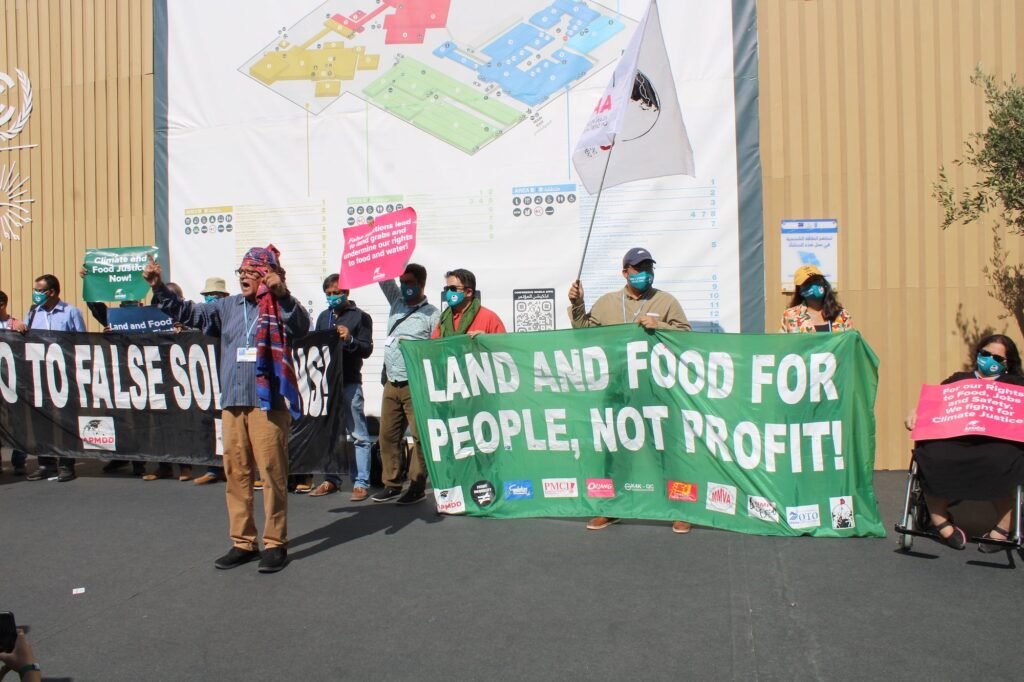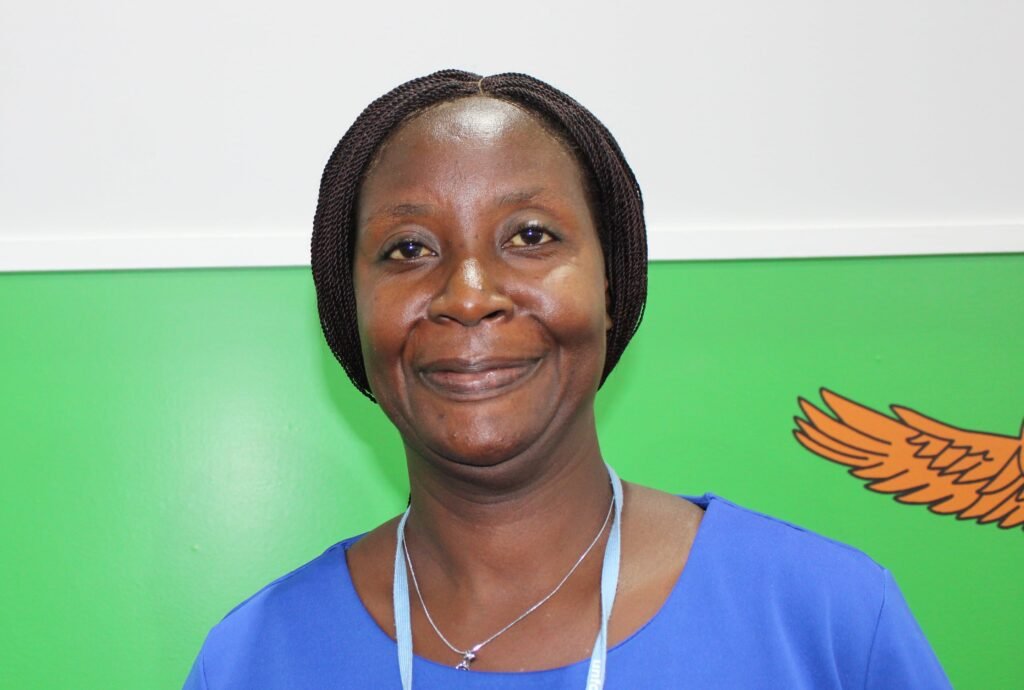By Busani Bafana
Climate risk on the table
Bananas, a key food and income source for millions of people around the world, are vulnerable to climate change. Without urgent action to protect agriculture, the foods we enjoy such as coffee, cocoa, and bananas could disappear from our plates, a study by Fairtrade warns.
Furthermore, climate change is threatening the production of maize, a staple in many countries with researchers pointing to changes in growing conditions affecting lands where maize is grown. “Climate change will mean we have less food and it will be of lower quality,” Joao Campari, the global food lead for the World Wide Fund for Nature (WWF), said. “Some studies have predicted significant declines of maize across the four countries that produce two-thirds of the world’s maize — namely the US, China, Brazil and India..
It is imperative that we limit global warming to 1.5 degrees Celsius to minimise impacts on food security. Food will be a victim of climate change, but it is also currently part of the problem,” said Campari. Fairtrade, a global organisation co-owned by more than 1.8 million farmers and workers, unveiled a Non-Fungible Banana, as a warning to consumers and global leaders at COP27.
It warned that smallholder farmers and agricultural workers need support to mitigate and adapt to climate change or the future of one of the world’s most beloved foods could very likely be a digital one.
“The Last Banana is Fairtrade’s call to the world that if we don’t step up and achieve inclusive
and equitable climate solutions with farmers and agricultural workers at the centre of climate action, we risk losing our favourite food products forever,” Melissa Duncan, Executive Director at Fairtrade International, noted in a statement on the launch of the non-commercial digital artwork which was viewed by global audiences in a digital gallery. Climate change has affected the yields of major crops, says Aditi Mukherji, Director of Climate Change Impact Area Platform, CGIAR. She cites the Intergovernmental Panel on Climate Change (IPCC) assessment report showing crop yield declines of up to 5.0 percent or more for crops like rice, wheat and maize since the 1960s due to human-caused climate change. “These yield declines are projected to rise at higher levels of global warming, and further reduce both agricultural productivity and the nutritive value of our food,” Mukherji adds. “Similarly, productivity of many other important crops, like coffee and cocoa are projected to decline… under different emissions scenarios.”
She also warned of a reduction in maize yields in the absence of adaptable seed systems. Researchers at the CGIAR project a reduction of around 10 percent in maize production in Africa and Latin America under various climate scenarios by 2055 and this is corresponding to losses of $2 billion per year. In Africa, maize will experience heat and drought stress, as well as shorter crop durations.
“This means growing seasons may not be long enough to allow maize plants to fully mature, with potentially catastrophic results for farmers and the millions of people who regularly consume maize,” says Mukherji.
“Climate-smart, drought-tolerant varieties of maize can help ensure food security, bolster climate resilience and grow the livelihoods of resourceconstrained farmers. These varieties give at least 25-30 percent greater yields than conventional varieties in droughtprone environments.”
Zambian maize farmer Esther Zulu attended COP27 and participated in discussions highlighting the threat of climate change on the future of food. In her village in the Eastern Province of Zambia, she has witnessed rivers drying as droughts intensify, crop yields dwindle and thinning pastures unable to support livestock.
“This means I can only sell a few bags and keep the rest for my family’s needs but the situation has changed in the last few years since I adopted climatesmart agriculture (CSA),” Zulu said. “I still get a good harvest even in a time of drought.” Practising CSA for the past five years has seen Zulu nearly tripple her maize harvest.
She has been training other farmers in her district on CSA since she learnt about it through the Community Markets for Conservation (COMACO) organisation in Zambia. Zulu, who also grows soya beans and sunflower, lamented that the shift in rain patterns has meant she grows her crops late and they never reach maturity without more rains but she has found a solution.
“I am now using climate-smart agriculture which has taught me the benefits of conserving the natural resources by planting Gliricidia sepium trees which bring back nutrients into the soil,” she said.
In the 2020/2021 farming seasons, Zulu harvested 145 (50kg) bags of maize.
This was a big increase from the 50 bags of maize she used to harvest before she adopted climate smart agriculture methods. She earns about ZKW35,000 (USD2,008) annually from her maize production.
“I am very much afraid that many of the foods we eat could disappear if we do not do something about climate change,” she said outside the Zambia pavilion at COP27.
Despite causing a third of emissions, only 3.0 percent of climate finance is currently dedicated to agriculture, according to Lim Li Ching, a panel expert with IPES-Food and Senior Researcher at Third World Network. A tiny proportion of climate finance is for diverse resilient food systems and small-holder farmers that really need support to adapt to climate chaos.
“The solutions being put forward by smallholder farmers, for diversified, agroecological systems, are some of the most cost-effective actions to tackle climate change – but they can’t be left to bear all of the burden,” said Li, noting that food insecurity is one of the first and most concerning impacts of the climate crisis.
More than 350 million family farmers in November 2022 petitioned world leaders to warn that global food security was at risk if they failed to get adaptation finance and promote a more resilient form of agriculture.
Small-scale producers produce as much as 80 percent of the food consumed in sub-Saharan Africa, but have accounted for only 1.7 percent of climate finance flows in 2018.
This is just $10 billion compared to the estimated $240 billion a year needed for them to adapt to climate change, according to the United Nations’ Food and Agriculture Organisation.
COP27 hosted the first ever Food Systems Pavilion and first ever Agriculture Day hosted by the COP Presidency, with food and agriculture featuring in the final cover text but with a narrow focus on agriculture rather than a food systems approach.
“Transforming food systems offers an opportunity to reverse the effects of climate change and build societies that are resilient to future shocks and stresses,”
says Dr Tilahun Amede, Head of Resilience, Climate and Soils Unit at the Alliance for a Green Revolution in Africa (AGRA) in Nairobi, Kenya, adding that, “sustainable farming and consumption are critical to striking a balance between needs of people and the planet.
These solutions offer us an opportunity to build food, socialeconomic and ecological resilience to negative effects of climate change.” Dr Amede says that Africa’s food systems have become fragile because of the high vulnerability to climate change. This has reduced their resilience to all sorts of shocks, including the Covid-19 pandemic and conflict.
There is growing food insecurity, with an estimated one in five people facing chronic hunger. “Smallholder farmers, and especially women and other marginalized groups such as youth are the most vulnerable,” Dr Amede notes, adding that “smallholders’ low adaptation capacities reduce their resilience and coping strategies to climate change. Considering that smallholders produce the bulk of food in Africa, this threatens food security.”
“Cash crops will generally shift with climate patterns, and it is likely that in many cases, prices will increase. Extreme weather events can wipe out large areas of such crops, while moves towards a zero-carbon economy are likely to affect items that must be shipped over long distances. With a growing population, demand for food is projected to grow by more than 50 percent in the next 30 years.
We will not be able to feed this growing population with the current focus on only a few staple crops. We must diversify our diets.” Dr Amede says that currently the focus of research and development is mainly on three crops: maize, wheat and rice, which together account for about 50 percent of the global calorie supply.
Crops like sorghum, millets, cassava, teff, fonio, which are adaptive to drought-prone and degraded soils of sub-Saharan Africa, rarely get attention in terms of technology development and have limited market incentives for farmers to grow them. “There is a need to move towards indigenous, resilient and nutritious crops of Africa that minimize vulnerability to reduced production of the staple crops and farmers can still have yields,” he says.
IPCC warns that most African countries will enter unprecedented higher temperature climates earlier in this century than generally wealthier, higher latitude countries.
There is also the risk of biodiversity loss. At above 1.5°C, half of assessed species in Africa are projected to lose over 30 percent of their population or area of suitable habitat. Then productivity loss. Agricultural productivity per capita has been reduced by 34 percent since 1961 due to climate change, more than any other region. Future warming will negatively affect food systems in Africa by shortening growing seasons and increasing water stress — this is already happening in Eastern Africa — leading to famine.
A push is now needed for tangible and credible solutions for agriculture and sustainable food systems to be included in the outcome of COP28 but Andrew Giacalone, senior advisor for media relations at Fairtrade International, is optimistic about the future of the banana.
“There is definitely a future for a sustainable banana trade – but it means governments and businesses need to fast-track their support for smallholder farmers and agricultural workers now and focus on building and enhancing net-zero supply chains,” he added.


